Typical design of photovoltaic off-grid system
A large part of people in today ’s world live in a world with or without electricity. They live in poor or remote areas, away from power plants and public power grids. Without electricity, they cannot enjoy the information that modern civilization brings to life. And convenience. The photovoltaic off-grid power generation system is an independent and self-sufficient renewable energy power supply system, which can solve their basic electricity problems.
A typical photovoltaic off-grid power generation system is mainly composed of six parts: solar modules, brackets, solar controllers, off-grid inverters, storage batteries, and distribution boxes. After the solar modules are connected to the solar controller, the user load is first used, and then Store the excess power in the battery for night and rainy days. When the battery is empty, most inverters can also support the mains input (or diesel generator) as supplementary energy to supply power to the load.
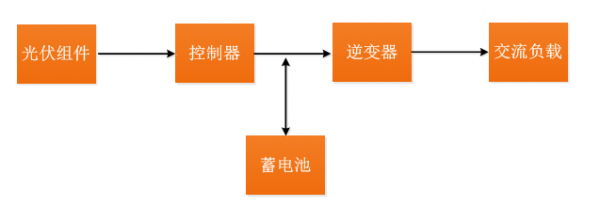
The design of the PV off-grid system is different from the grid-connected power generation system. It needs to consider the user's load size, daily electricity consumption, local climate conditions and other factors. It is relatively complicated to choose different design schemes according to the actual needs of customers. In order to ensure off-grid The system can work reliably, it is very necessary to do a preliminary customer demand survey. The design of photovoltaic off-grid system mainly includes inverter selection, component capacity design and battery capacity design:
One. Inverter selection: determine inverter power according to user load size and type
The selection of the inverter power size is generally not less than the total load power, but considering the service life of the inverter and subsequent expansion, it is recommended that the inverter power needs to be considered with a certain margin, generally 1.2 to 1.5 of the load power In addition, if the load contains an inductive load similar to a refrigerator, air conditioner, water pump, range hood, etc. with a motor (the starting power of the motor is 3 to 5 times the rated power), the starting power of the load needs to be taken into account, namely The starting power of the load should be less than the maximum impact power of the inverter. The following is the calculation formula of inverter power selection for reference in design.
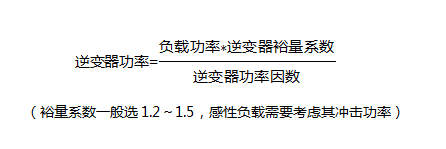
two. Component capacity determination: determine the component capacity according to the user's daily electricity consumption and light intensity
Part of the electricity generated by photovoltaic modules during the day is used for the load, and the rest is used to charge the battery. At night or when the solar radiation is insufficient, the electricity stored in the battery will be discharged to the load. It can be seen that when there is no commercial power or diesel engine as In the case of supplementary energy, all the power consumed by the load comes from the electricity generated by the photovoltaic modules during the day. Considering the different seasons, the light intensity of different regions will be different. In order to ensure the reliable operation of the system, the capacity design of the photovoltaic panel should be The poor season can also meet the demand. The following is the calculation formula of the capacity of the photovoltaic panel:

three. Determination of battery capacity: Determine battery capacity according to night electricity consumption or backup time
The storage battery of the photovoltaic off-grid system is mainly used for energy storage to ensure that the load can still work normally when the solar radiation is insufficient. For off-grid photovoltaic systems with important loads, the design of battery capacity needs to consider the longest number of rainy days in the local area. Ordinary photovoltaic off-grid system load power requirements are not high, considering the cost of the system, you can not consider the number of rainy days, as long as the use of the load is adjusted according to the actual light intensity. In addition, most photovoltaic off-grid systems use lead-acid batteries. The discharge depth of lead-acid batteries is generally 0.5-0.7. The design of battery capacity can refer to the following formula:
four. Typical design scheme of 10kVA photovoltaic off-grid system
Project background: Design a photovoltaic off-grid system for a school in the Congolese capital to meet its daily electricity consumption.
1) Project demand survey
In the early stage of the design plan, customer needs investigation (load information must be accurate) is as follows:
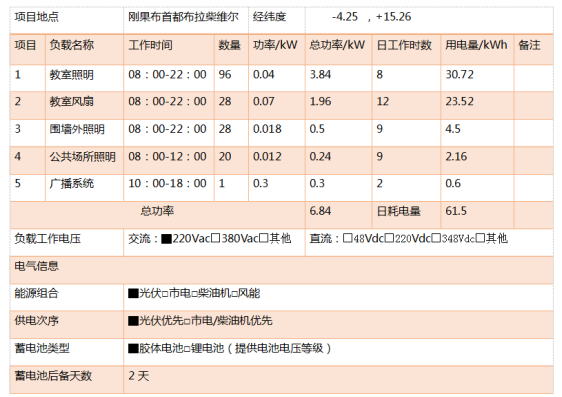
2) Inverter selection
The customer's load is mainly classroom lighting, classroom fan, public place lighting, wall lighting and broadcasting system, etc., the total load power is 6.84kw, the inverter power selection is not less than 9.8kVA, you can choose Jingfuyuan ESS10K inverse control integrated machine, The output power is 10kVA.
3) Determination of component capacity
According to the customer demand questionnaire, it can be seen that the average daily electricity consumption of the school is about 61.5kWh, and the local lighting conditions are better. According to the daily sunshine time of 4.23h, the module configuration is 1.1 times the margin, and the design uses 88 270W polycrystalline photovoltaic The total power of the module is 23.76kW, and the average daily power generation is 100.5kwh. Considering the system efficiency, it is generally 0.8, and the daily available electricity is 80kwh.
4) Determination of battery capacity
Most of the school's lighting is used at night. Considering the service life of the battery, the battery capacity should be increased appropriately. The battery backup time required by the customer is 2 days, and the battery discharge depth is 0.7. The project uses 110 knots 1000AH / 2V The colloidal batteries are connected in series, with a total capacity of 220,000 VAH, and the available power is about 154kwh, which can meet the power demand of 2 days of backup time.
5) System plan
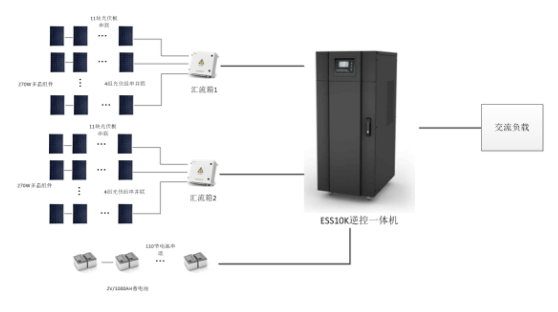
This QY-300 hydraulic crimping tool serves to crimp the conductor, earth wire, and the terminals connecting copper wires with aluminum wires. Our product possesses the drawer type structure, thus being reasonable and compact. It can be equipped with the super high pressure Hydraulic Pump Station. The matched QY-250M dies need to be purchased additionally with the item number of 16106G or 16106L.
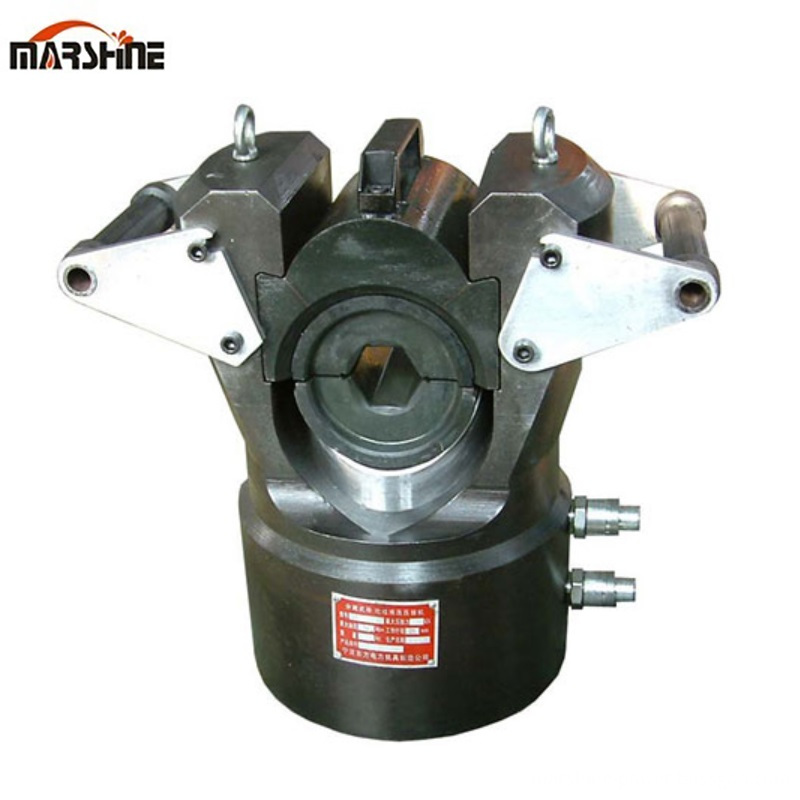
Compressopm Joint And Shearing Device
Hydraulic Compressor, Hexagon Compression Die Sets, Superhigh Pressure Hydraulic Pump Station, Manual Pump, Quick Manual Hydraulic Press, Manual Hydraulic Press.
NINGBO MARSHINE POWER TECHNOLOGY CO., LTD. , https://www.marshine-power.com